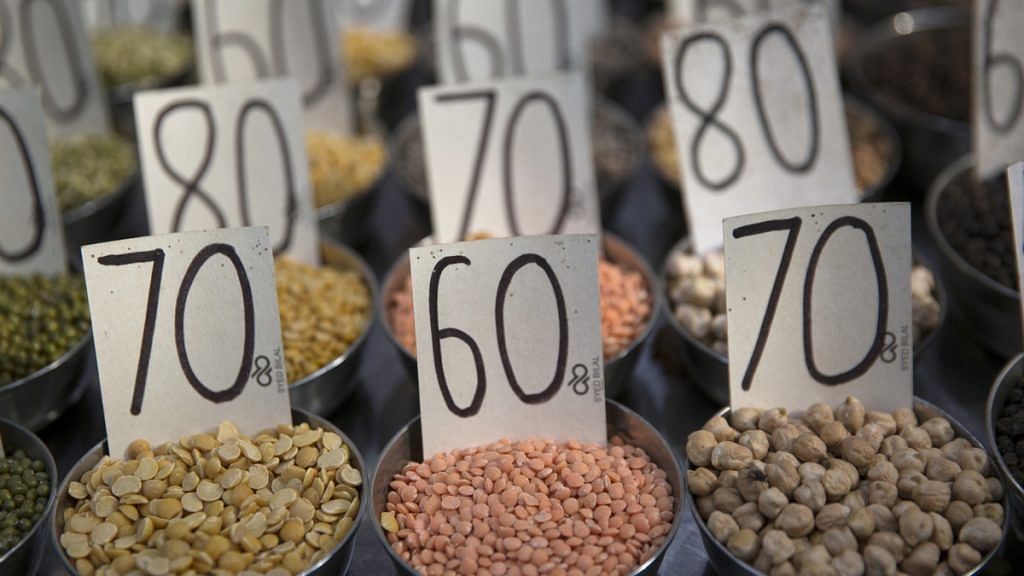There is a glut in the pulses market due to high imports and production resulting in CPI prices for pulses dropping by 9% for November.
New Delhi: High imports of pulses over the last few years and increased minimum support price (MSP) by the Modi government have not only led to a surge in production but also a glut in the pulses market.
Consider this: In 2015-16, India produced 16.4 million tonnes (MT) of pulses while importing 5.8 MT.
In the next year, even when production rose to 23.1 MT, imports also increased to 6.61 MT. It is a similar tale for 2017-18, when 5.61 MT of pulses were imported despite total production exceeding 25 MT.
Besides, the Modi government also does not have any official data on consumption of pulses for the last four years.
The net result has been a considerable drop in the price of the pulses. The Consumer Price Index (CPI) for pulses in November dropped by over 9 per cent to 119.1, compared to 131.2 in the corresponding period last year.
The worst impacted have been Arhar, Moong and Urad, with prices consistently below the MSP.
Also read: Falling crop prices blow holes in Modi’s promise of higher incomes to farmers
‘MSP regime only distorting market’
The drop in the price of pulses has brought into focus the government’s MSP scheme.
The government has so far spent Rs 15,034 crore in 2018-19 for procuring pulses under the MSP scheme, 43 per cent more than what it spent in the previous year.
The rise in procurement is due to the government increasing the MSP for pulses during the course of the year. For Arhar, the MSP has been increased from Rs 5,450 a quintal earlier this year to Rs 5,675 now, while for Moong it has been increased from Rs 5,575 to 6,975 a quintal. The MSP for Urad has gone up from Rs 5,400 a quintal to Rs 5,600.
“MSP has only created market distortion without providing relief to the farmers,” Ashok Gulati, economist and former chairman of the Commission for Agricultural Costs and Prices (CACP) told The Print. “It is not a feasible policy option… It has also led to large procurement by the government that is often found lying unused.”
Soumya Kanti Ghosh, chief economist, the SBI Group said: “CPI inflation has eased to 2.33 per cent for November mostly by deflation in pulses and vegetables. The MSP mechanism has not worked and the much publicised PM-AASHA scheme needs to be pushed more by the Niti Aayog.”
The Pradhan Mantri Annadata Aay Sanrakshan Abhiyan (PM-AASHA) scheme was launched by the government in September to ensure remunerative prices to the farmers for their produce.
Also read: Shivraj Chouhan’s Madhya Pradesh shows the more the Indian farmer grows, the angrier he is
